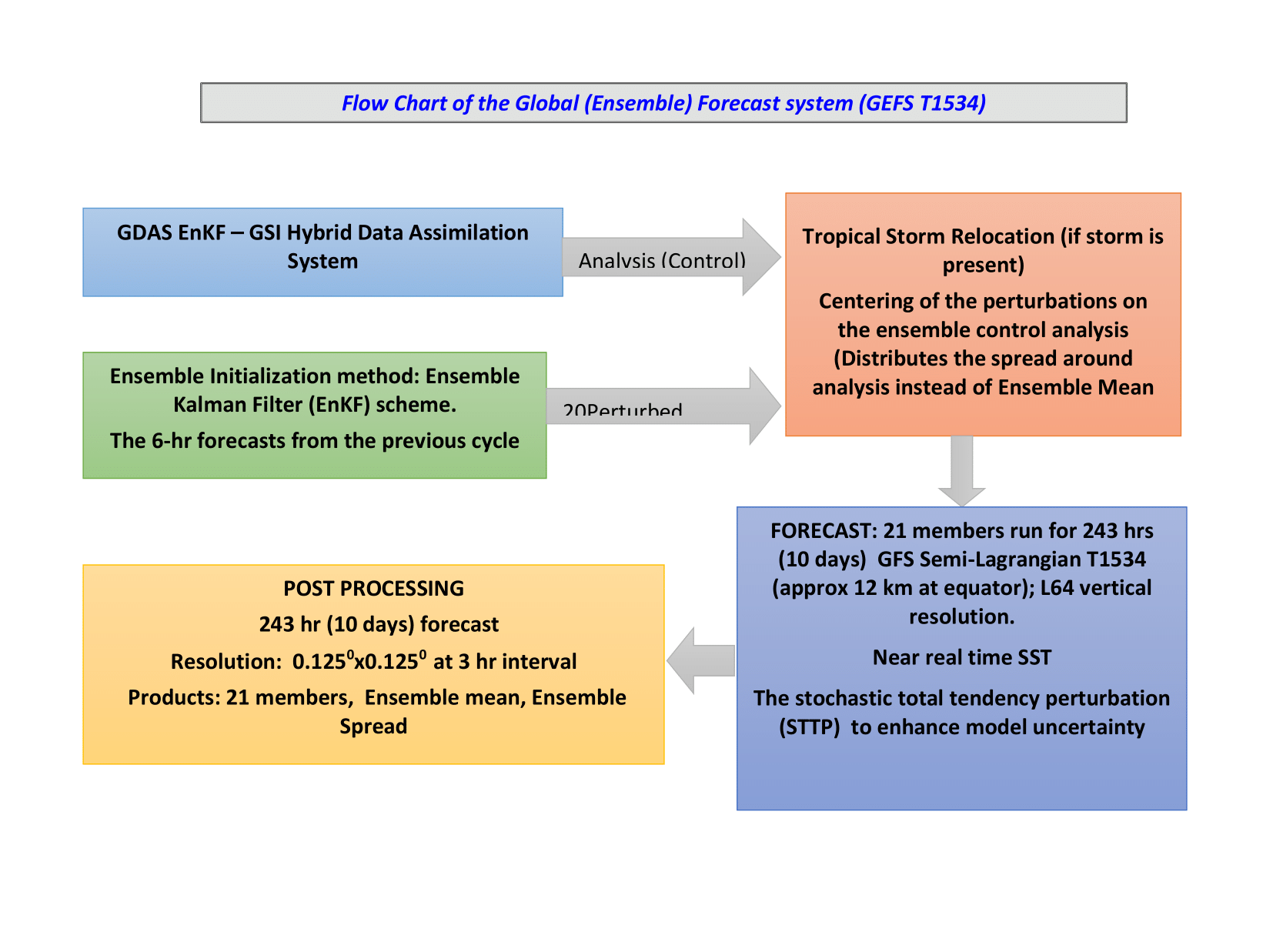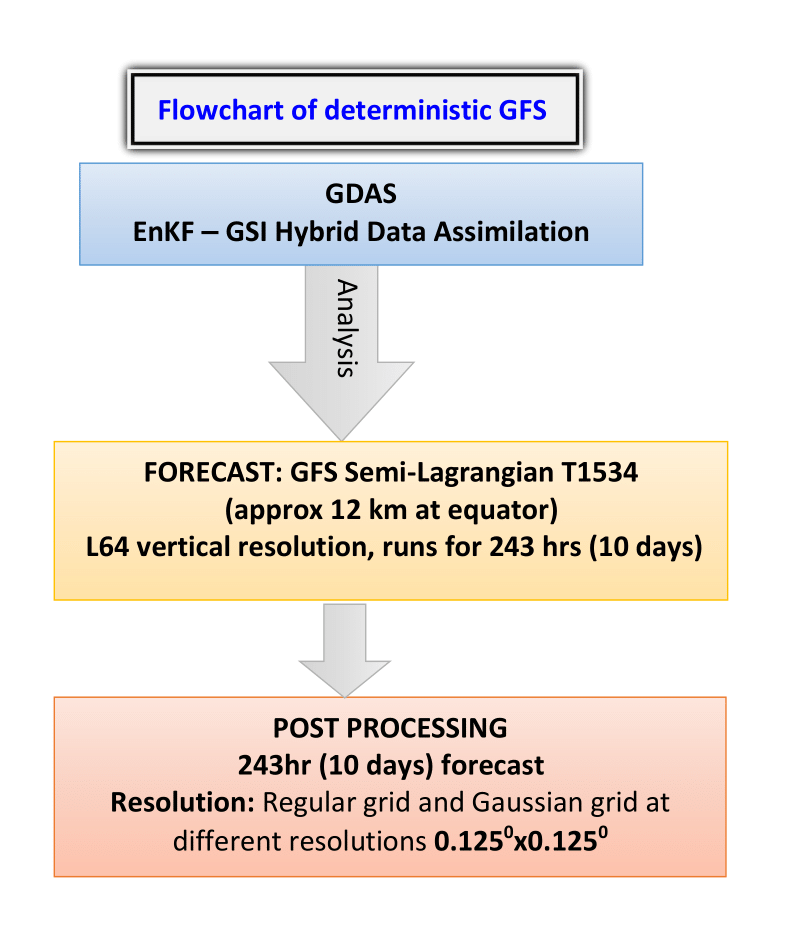The launch of the National Monsoon Mission (NMM) by the Ministry of Earth Sciences (MoES) in 2012 (Rao et al. 2019), and the decision by the Indian Institute of Tropical Meteorology (ESSO-IITM) to use the NCEP GFS/CFS (Saha et al., 2010; 2014) as a common platform for weather and climate prediction led to the development of dynamical modeling systems for short to medium range (1-10 days), extended-range (2-4 weeks), seasonal forecasts and climate projections. As part of this initiative, all research is conducted on the operational modeling framework based on GFS/CFS, and each modeling system was transferred to ESSO-IMD for operational use.


| Convection |
|
|---|---|
| Microphysics | Zhao-Carr-Moorthi microphysics scheme for Grid-scale Condensation, Evaporation and Precipitation |
| Gravity Wave Drag | Orographic gravity wave drag, mountain-drag and stationary convective gravity wave drag |
| PBL | New PBL Hybrid Eddy-diffusivity Mass-flux Scheme (Estimate Subgrid-scale vertical turbulent mixing in the PBL and above; mass-flux approach to calculate the countergradient diffusion terms) |
| Radiation | LW and SW radiation parameterizations are optimized and modified (AER) by NCEP and uses unevenly distributed 140 g-points (quadrature) in 16-bands and 112 g-points in 14-spectral bands respectively. To represent statistically the unresolved subgrid cloud variability Monte Carlo Independent Column Approximation (McICA) is used. Cloud fraction for radiation is computed diagnostically from prognostic cloud condensate |
| Surface | Land use land cover data (LULC) from National Remote Sensing Centre (NRSC) |
As the GFS/GEFS T1534 modelling system is based on linear Gaussian grid with triangular truncation in the spectral domain, many challenges are being faced particularly in scaling the model in High Performance Computing (HPC) systems, the I/O issue, artificial damping of diffusion, even though the semi-lagrangian dynamical core allows larger time step to make the forecast run faster. To get rid of the above mentioned issues related to dynamical core of a high resolution model, a Spectral Cubic Octahedral (TCo) framework was implemented in the GFS. This new version was verified for the prediction of monsoon rainfall, tropical cyclones and extreme events that occurred during 2022-2024 (Phani et al. 2025). This new version, shows promising skill in predicting the rainfall in general and also in predicting heavy rain events. It also shows remarkable improvement in the track prediction of tropical cyclone forecasts.
Copyright © 2025 Indian Institute Of Tropical Meteorology (IITM), Pune, Maharashtra - 411008, INDIA.
All Rights Reserved | Designed & Developed by Mrs. Supriyarani Mandal (SMRPS team)